Are you interested in exploring the world of hash-making? If so, you’ve come to the right place.
This comprehensive guide will walk you through the process of making hash from kief. Kief, for those unfamiliar, is a concentrated form of cannabis made up of trichomes, the resinous glands found on the plant’s surface. These trichomes contain the potent compounds that give cannabis its therapeutic and psychoactive effects.
To begin our journey into hash making, we will first explain how to collect and prepare kief. This involves using a grinder or sifter to separate the trichomes from the plant material.
Once you have enough kief, we will dive into the traditional methods of hash making, such as hand-rolling and pressing. We will discuss the different types of hash that can be made using these methods and provide step-by-step instructions on achieving the best results.
We will also share some valuable tips and tricks to ensure you achieve the highest quality hash possible. Whether you’re a seasoned hash maker or a beginner looking to dip their toes into this ancient art form, this guide will provide you with the knowledge and techniques needed to create your own hash from kief.
So, grab your grinder and prepare to embark on a hash-making adventure!
What is Kief?
Kief, a concentrated form of cannabis resin, is created by separating the trichomes from the rest of the plant material. Trichomes are the small, crystal-like structures that contain most of the plant’s cannabinoids and terpenes. They are found on the surface of the cannabis flower and are responsible for the plant’s potent effects.
Kief can be used in a variety of ways in other cannabis products. It can be sprinkled on top of a bowl of cannabis flower to enhance the potency and flavor of the smoke. It can also be used to make edibles, tinctures, and concentrates. The high concentration of cannabinoids in kief makes it an ideal ingredient for these products, allowing for a more potent and efficient consumption method.
Consuming kief also offers several health benefits. The cannabinoids present in kief, such as THC and CBD, have been shown to have anti-inflammatory, analgesic, and neuroprotective properties. This means that consuming kief may help to reduce pain, inflammation, and symptoms associated with certain medical conditions.
Furthermore, kief is often considered a cleaner and purer form of cannabis, as it contains no plant material. This can benefit individuals who prefer to avoid smoking or inhaling plant matter.
Collecting and Preparing Kief for Hash Making
Once collected and prepared, kief can be transformed into high-quality hash. To ensure the best results, storing your kief properly is essential. This will help preserve its potency and flavor.
Proper storage involves keeping it in an airtight container, away from light, heat, and moisture. This will prevent degradation and maintain the quality of the kief for future use. Additionally, storing kief at a cool temperature, such as in the freezer, can help preserve its freshness and prevent it from clumping together.
When making hash from kief, the strain of cannabis used plays a crucial role. Different strains have different levels of resin glands, which contain cannabinoids and terpenes that give hash its unique properties.
Some strains are more suitable for hash-making due to their higher resin content and specific terpene profiles. For example, strains high in THC and CBD, such as OG Kush or Blue Dream, are often favored for making hash. These strains provide a potent and flavorful end product. Strains with lower resin content may not produce as much hash or have a less desirable flavor.
Traditional Hash-Making Methods
To create traditional hash, you’ll need a few key ingredients and methods. The first step is to gather high-quality kief, the fine powder that collects at the bottom of your grinder or trim tray. This kief is rich in trichomes, which contain the resinous compounds that give hash its potency.
Once you have collected enough kief, you can begin the hash-making process. One of the oldest and most traditional hash making techniques is hand-rolling. This method involves taking a small amount of kief and rolling it between your palms to create a small ball or pellet. This process helps to agitate the trichomes and cause them to stick together, forming a solid piece of hash. This method requires patience and skill, as it can take some time to roll enough hash to produce a usable amount.
Another traditional method is the use of a pollen press. A pollen press is a small, cylindrical device that compresses kief into a solid hash block. Fill a pollen press with kief, apply pressure, and twist to compress the kief into a solid shape. This method allows for a more consistent and compact hash, making it easier to handle and store.
The historical significance of hash-making cannot be overstated. Hash has been produced and consumed for centuries, dating back to ancient civilizations in the Middle East and Asia. These traditional hash making techniques have been passed down through generations, preserving the art and craft of hash production.
Today, while many modern methods and technologies are available for making hash, traditional methods still hold a special place in the hearts of hash enthusiasts worldwide.
Modern Techniques and Tools for Hash Making
Modern techniques and tools have revolutionized the process of making hash. With technological advancements, hash makers can now access innovative hash-making equipment to extract high-quality hash from kief more efficiently and effectively. These tools enhance extraction, producing a superior product with a higher potency and better flavor profile.
One of the key advancements in hash making equipment is the use of solventless extraction techniques. Solventless hash extraction involves using mechanical methods to separate the trichomes from the kief without using any solvents. Many hash makers prefer this method because it produces a purer and cleaner product without any residual solvents. Some popular solventless extraction techniques include dry sifting, ice water extraction, and rosin pressing.
In the table below, we have listed some innovative hash-making equipment and their respective features:
| Equipment | Features |
|---|---|
| Rosin press | Uses heat and pressure to extract hash oil from kief. Can be used with or without a solvent. |
| Pollen shaker | Shakes kief through a series of screens to separate trichomes of different sizes. |
| Bubble bags | Used for ice water extraction, these bags separate trichomes from plant material based on size. |
| Tumble trimmer | Uses a spinning drum and mesh screen to separate trichomes from plant material. |
| Hash washing machine | Automates the process of washing kief with ice water to extract trichomes. |
These innovative hash-making equipment have made the process of making hash from kief more efficient and precise. Hash makers now have access to a wide range of tools that can cater to their specific needs and preferences. As the industry continues to evolve, we can expect to see even more advancements in hash-making equipment, further enhancing the quality of the final product.
Can Moon Rocks be used to make Hash From Kief?
Moon rocks, explained in detail, are a potent combination of cannabis buds, oil, and kief. The kief used in moon rocks is essentially concentrated trichomes, so it can be used to make hash. However, moon rocks themselves are already a high-THC product, so using them to make hash may not be necessary.
Tips and Tricks for the Best Hash Making Results
Try incorporating these tips and tricks into your process for the best results when making hash.
- Understand the different types of hash and their unique characteristics: Before starting your hash-making journey, familiarize yourself with the different types of hash available. From traditional hand-pressed hash to more modern methods like ice water extraction and dry sifting, each technique produces a hash with its own unique texture, potency, and flavor profile. By understanding these differences, you can choose the method that best aligns with your preferences and desired end product.
- Use high-quality kief: The quality of your starting material, in this case kief, dramatically impacts the final product. Ensure you’re using high-quality kief free from contaminants and plant matter. This will result in a cleaner and more flavorful hash.
- Experiment with different temperatures: The temperature at which you press your kief can greatly affect your hash’s final consistency and potency. Higher temperatures produce a more malleable and sticky hash, while lower temperatures result in a crumbly and dry texture. Experimenting with different temperatures will allow you to find the perfect balance for your desired hash consistency.
- Properly store and age homemade hash for optimal flavor and potency: After making your hash, it’s essential to store it properly for optimal flavor and potency. Keep your hash in an airtight container in a cool, dark place, away from direct light and heat. This will help preserve its flavors and prevent degradation. Additionally, aging your hash for a few months can enhance its flavors and smoothness, allowing it to develop a more complex profile over time.
Frequently Asked Questions
How long can kief be stored before it loses its potency?
Proper storage methods are crucial for preserving kief potency. When stored in an airtight container, away from light and moisture, kief can maintain its potency for up to one year. However, over time, aging can gradually degrade its quality and potency.
Can you make hash from kief that has been stored for a long time?
Yes, you can make hash from kief that has been stored for a long time, as long as it has been properly stored to preserve its potency. Additionally, aged kief can be creatively used in cannabis-infused recipes.
Is it possible to extract kief from different strains of cannabis and make hash from each strain separately?
Yes, it is possible to extract kief from different strains of cannabis and make hash from each strain separately. Different techniques can be used to extract kief, resulting in hash with distinct effects and flavors.
Can hash be made from kief already used in a vaporizer or smoked in a joint?
Reusing kief has pros and cons. While it can be used to make hash, the potency may be reduced. To maximize potency, use a finer mesh screen to collect kief and consider adding fresh kief to enhance the flavor and effects.
What is the difference between hash made from kief versus hash made from whole cannabis buds?
The difference between hash made from kief and whole cannabis buds lies in the potency and flavor. Using kief allows for higher concentrations of THC and other cannabinoids, resulting in a more potent and flavorful hash. Using techniques such as cold pressing or dry sieving, one can maximize the potency of hash made from kief.

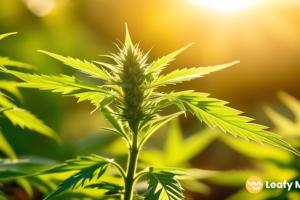
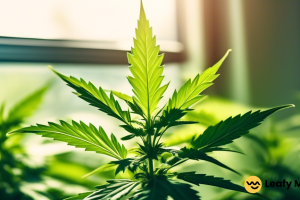





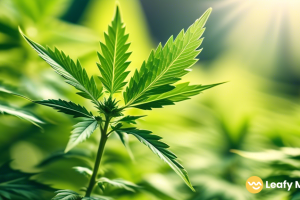
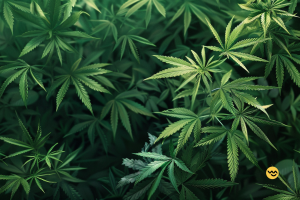
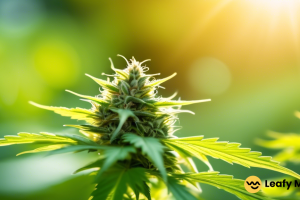
Leave a Reply